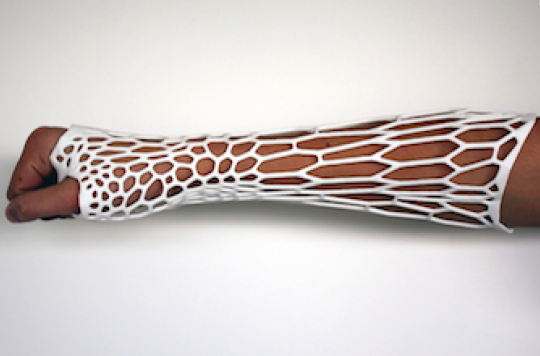An American student designed a revolutionary plaster prototype using a 3D printer. Lighter, ventilated and recyclable, it would prevent itching.

Perhaps this is the end of the nightmare for anyone in the future who will have to wear a cast. An American medical student has just created a prototype of ventilated plaster that avoids heat, itching and unpleasant odor. Another advantage is that the plaster would be extremely rigid around the fractured area, and on the contrary more flexible on the other parts holding the device in place.
Jake evill is the inventor. A graduate of Victoria University of Wellington, it is with a Cortex 3D printer that he hopes to help patients. This airy exoskeleton is strong and efficient, according to its author. Its manufacturing process is done in three stages, making an X-ray to identify the fracture and locate it precisely, carry out a 3D scanner to define the exact dimensions of the affected limb, and print the plaster model in 3D using the data entered in the computer.
Once these tasks are completed, the 3D printer takes out two separate parts that must then be welded to create the plaster. Called “Cortex”, this new plaster entirely composed of nylon, seems to multiply the advantages, it is lighter, more solid, waterproof and easily removable. Plus, it’s also recyclable, says Jake Evill.
However, the invention has a downside, its manufacturing time. It is estimated at 72 hours, during which time the patient must remain with his often painful fracture. The printer takes about 3 hours to deliver the model, plus a rest period for the product to be strong enough. But Jake Evill does not give up hope, he hopes that the improvement of 3D printers will shorten this timeframe.
.

















